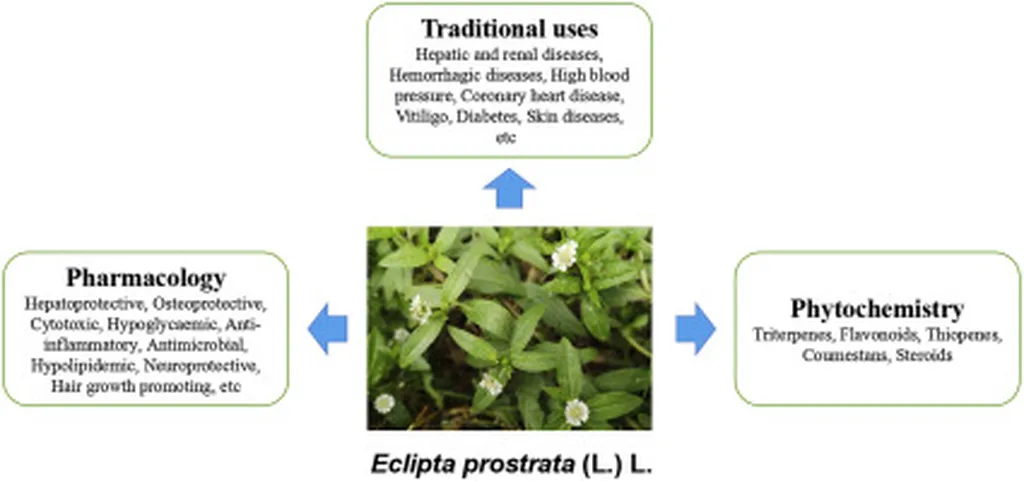In the relentless pursuit of effective treatments for acute myeloid leukemia (AML), a team of researchers led by K.M. Tanjida Islam from the Department of Biotechnology and Genetic Engineering at Mawlana Bhashani Science and Technology University has turned to an unconventional ally: the medicinal plant Eclipta prostrata. Their groundbreaking study, published in Scientific Reports, employs a sophisticated in-silico approach to unveil the plant’s potential mechanisms against AML, offering a glimmer of hope in the fight against this aggressive hematological malignancy.
AML, a cancer of the blood and bone marrow, remains a formidable challenge due to its poor prognosis and limited treatment options. The research team, leveraging the power of computational biology, has identified 12 potential anti-cancer compounds from E. prostrata. Among these, Kaempferol and Apigenin demonstrated strong binding affinities to the FLT3 protein, a known therapeutic target in AML. Similarly, Tricetin and Diosmetin showed promising interactions with PIM1, another critical protein involved in the disease.
The study’s lead author, K.M. Tanjida Islam, expressed enthusiasm about the findings: “Our comprehensive in-silico analysis has not only identified promising therapeutic compounds from E. prostrata but also revealed novel biomarker potentials for improved AML diagnosis and prognosis.” This sentiment underscores the dual significance of the research—both in terms of potential therapeutic interventions and diagnostic advancements.
The researchers employed a multifaceted computational approach, including network pharmacology, molecular docking, molecular dynamics simulations, and 3D-QSAR modeling. The robustness of their findings was further validated through gene regulatory network analysis, gene expression studies, patient survival analysis, and cancer hallmarks analysis. The predicted IC50 values for the identified compounds showed promising results, indicating their potential efficacy in inhibiting key proteins involved in AML.
One of the most compelling aspects of this research is its potential to shape future developments in the field. By identifying key regulatory elements such as microRNAs and transcription factors, the study provides a roadmap for further experimental validation and drug development. Moreover, the discovery of FLT3 and MPO as specific diagnostic and prognostic biomarkers could revolutionize AML management, offering more precise and personalized treatment strategies.
The commercial implications of this research are substantial. The identification of novel therapeutic targets and biomarkers not only paves the way for the development of new drugs but also enhances the potential for diagnostic tools that can improve patient outcomes. For the energy sector, this research highlights the broader potential of integrating computational biology with traditional medicine to drive innovation and discovery.
As the scientific community continues to grapple with the complexities of AML, this study serves as a testament to the power of interdisciplinary research. By bridging the gap between traditional medicine and cutting-edge computational techniques, the researchers have opened new avenues for exploration and innovation. The journey towards effective AML treatments is far from over, but with each discovery, we inch closer to a future where this devastating disease can be effectively managed and, ultimately, conquered.

